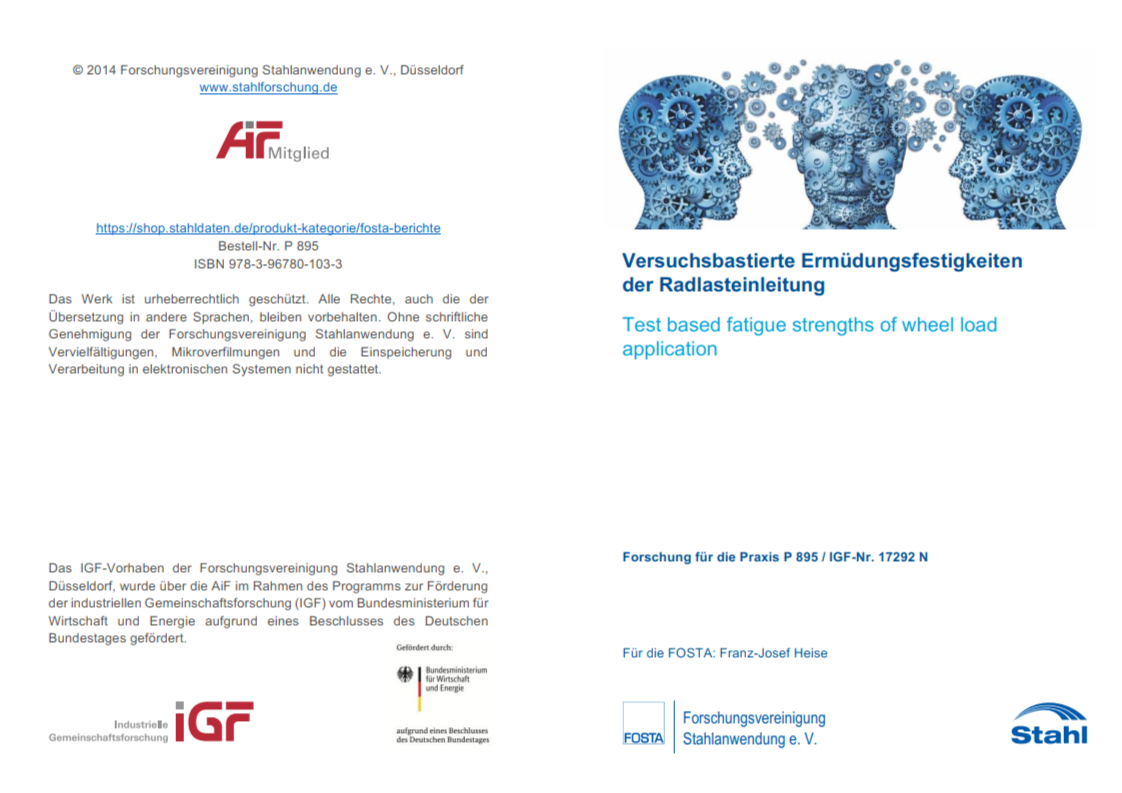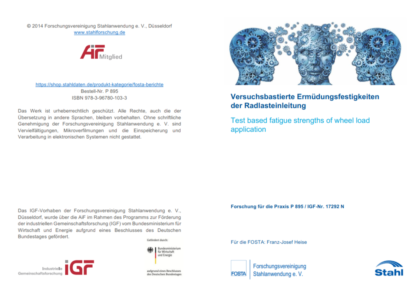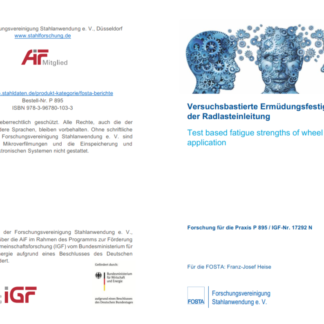Description
P 895 – Test based fatigue strengths of wheel load application
In buildings, cranes and facilities of materials handling, supporting structures primarily made of steel are exposed to moving concentrated loads due to the motion of goods and machinery normally acting as wheel loads. The joints and connections in the region of the wheel load application are subjected to local compressive and shear stresses superposed by global stresses from girder bending and shear forces. As this multiaxial stress state is caused repeatedly during each crane passage, the joints and connections are potential locations of fatigue damage.
In contrast to the old national design standards that contained comparable design rules and strengths for the fatigue evaluation of cranes and crane runways, the European fatigue assessment procedures are different for both. As a consequence a couple of constructional details with wheel load application including welded flange-to-web connections are upgraded for cranes concerning their fatigue strength while the same details are downgraded in the detail catalogues of crane runways. The fatigue classification of these constructional details has been derived theoretically in all design standards so far as appropriate fatigue tests are missing. The state of the art concering the known fatigue tests on constructional details with wheel load application is summarized. An overview of the existing fatigue assessment procedures for welded connections under multiaxial fatigue loading is given. Based on the available information a test program for crane runways with welded flange-to-web connections under travelling wheel loads and stationarily pulsating wheel loads is set up. The investigation of both types of wheel loads takes into account that travelling wheel loads induce a nonproportionally and stationarily pulsating wheel loads a proportionally multiaxial fatigue loading.
The determination of the fatigue strength for the tested flange-to-web connections is based on nominal and notch stresses. For the evaluation of the multiaxial fatigue loading empirical fatigue assessment procedures as well as innovative approaches as selected hypotheses of the critical plane and integral methods are applied.
Published in:
2014
Authors:
Prof. Kuhlmann, Prof. Roos




